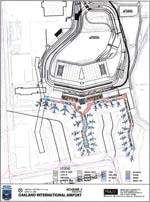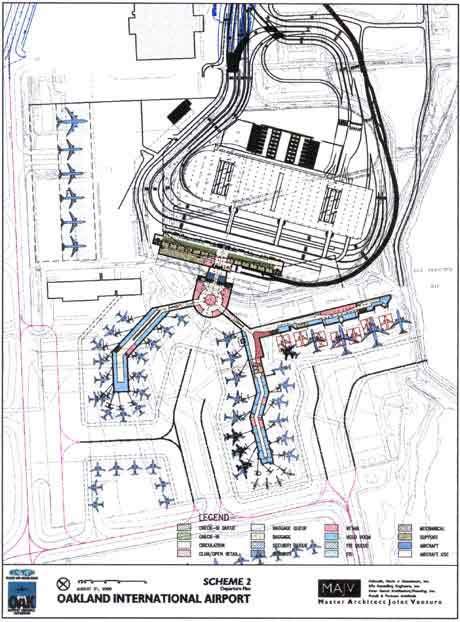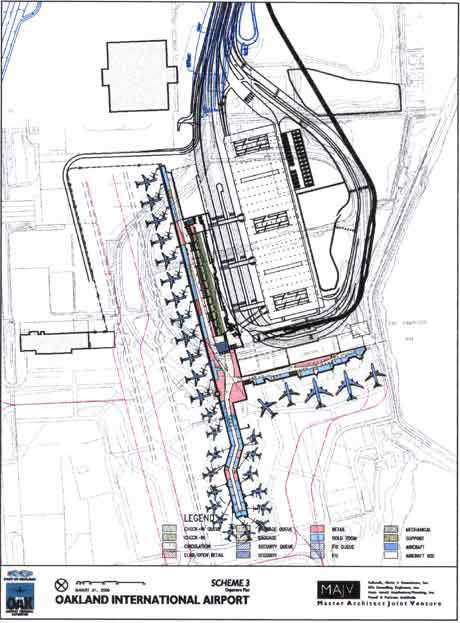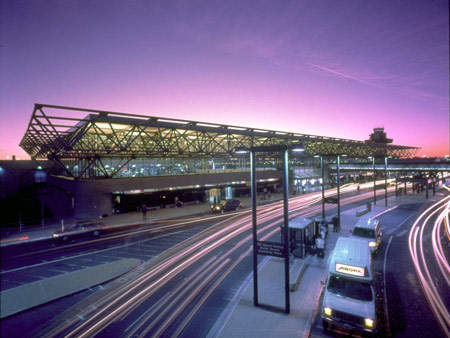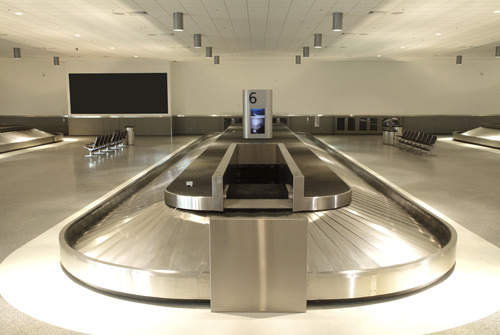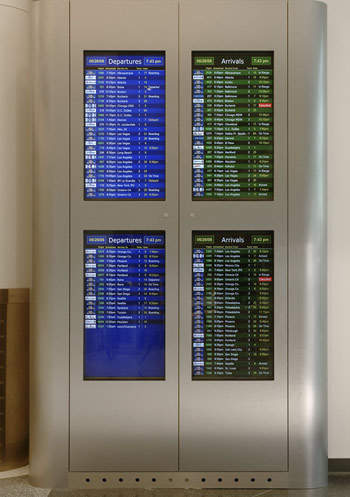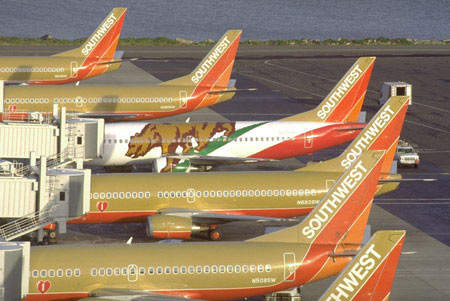Oakland International Airport (OAK), California, USA, is looking towards the future with its new Airport Development Programme (ADP), a group of projects designed to accommodate anticipated growth in passenger and cargo volume.
Although the plan has changed somewhat since its first inception in 1998–1999, and in the wake of the events of 11 September 2001 some progress has been made in renovating and updating this important airport. The terminal expansion programme is scheduled for a period of ten years and is due to be completed by 2008–2009.
In 2004 United Airlines withdrew from their maintenance hangar in Oakland (a cost-saving move to avoid bankruptcy). This has opened a 40ac site on the northern side of the airport, which could be a potential site for the new third terminal and allow Airport Road to be realigned.
A third terminal is planned, but whether it gets built will depend on the costing and the state of the economy when the current renovations are finished. The expansion of the airport is expected to bring 4,000 construction and aviation jobs to the Oakland area, which offsets the 1,000 jobs taken away when the United maintenance hangar was closed.
OAKLAND PASSENGER TRAFFIC AND CARGO
Over the last decade, Oakland International Airport has increased its passenger traffic, airline operations, parking lot activity and rental car concessions. The increase has placed a great deal of stress on the existing facilities, some of which are 40 years old and are in a desperate need of renovation and expansion.
The current terminal expansion improvements for terminals one and two will enable the airport to handle approximately 16 million passengers a year by 2008 compared to the nine million using the terminals in 1999 and 13.6 million using the terminal in 2005.
Air cargo traffic at the airport by 2010 is expected to be four times as large as the present traffic. All of the cargo and passengers will be transported to and from the airport over the local roads and freeways of the East Bay.
TERMINAL EXPANSION IMPROVEMENTS
Between 2004 and 2005 Turner Construction was awarded contracts worth $170m for the expansion of terminal two and the renovation of Terminal One. March 2004 saw the start of the first phase of expansion which included: upgrades to the south terminal (T2) for the main carrier Southwest Airlines and a new 6,000-space seven-storey car park in front of the two existing terminals.
The first phase will also add a new concourse onto the south end of terminal two with seven new gates for airplanes and ten security checkpoints and also an expanded ticket counter. The facilities will also include new centralised food and retail shopping areas and three new luggage claim carousels.
The first phase is due to be completed by the first quarter of 2007, building work was complete by the end of November 2005 and the gates following internal fit-out will be open sometime in mid-2006.
The overall plan has now changed from two, two-storey terminals to three one-storey terminals built in phases. This will form the main focus of phase two of the airport expansion / renovation scheme. The next stage of the plan is to renovate the 40-year old terminal one to bring it into alignment with modern airport facilities.
Another problem for the airport has been accessibility. The airport is accessible from interstate 880 but a $115m project to improve the airports 98th avenue approach was completed in early 2004.
OTHER OAKLAND AIRPORT IMPROVEMENTS
The Bay Area Rapid Transit (BART) hopes to open a $208m monorail-style connector to the airport by 2010. Other improvements include the demolition of existing rental car facilities and the construction of new interim facilities; realignment of the airport drive loop road, John Glenn Drive and Neil Armstrong Way; upgrades to underground utilities; expansion to the daily parking lot; and landscaping.
Airside improvements will include relocation of the existing fuelling rack, new aprons around the concourse, new passenger loading bridges and new hydrant fuelling facilities at the gates.
The overall cost for the project is expected to be in the region of $500m, but factoring the cost of the new third terminal will bring the costs up to over $1.4bn. The airport has been planning its improvements for 14 years and has spent $42m on planning, consultation and environmental assessment.

